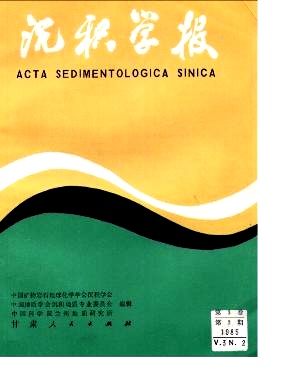FORMATION OF LOW PERMEABILITY SANDBODIES AND SECONDARY PORE SANDBODIES IN THE UPPER TRIASSIC YANCHANG SERIES OF SOUTH-WESTERN SHAN-CAN-NING BASIN
- Received Date: 1984-01-24
- Publish Date: 1985-06-10
Abstract: It is of great significance to prospect sandbodies with good petrophysical properties in the Upper Triassic Yanchang Series of Shan-Gan-Ning Basin. This paper presents the diagenesis and digenetic' history of sandbodies in Yanchang Series, southwestern Shan-Gan-Ning Basin and the followning principal viewpoints. 1. The diagenesis of turbidite sandbodies in Yanchang Series is predominantly mechanical compaction. As the compaction has a strong effect upon the sandbodies with fine grain, more matrix and poor sorting, the low permeability turbidite sandbodies of compaction type are formed. 2. The cementation caused by authigenic minerals of diagenetic stage was extensively developed in the sandbodies of both deltaic front and distributary stream in Yanchang Series. Though the sandbodies are characterized by well sorting and less matrix contents, their primary intergranular pores are, in large, reduced by the compaction and cementation from authigenic minerals and became low permeability sandbodies of compaction-cementation type. 3. A lot of laumontite cement, carbonate cement and carbonate detritus of sandbodies were dissolved during mature stage of mesodiagenesis.The dissolution and kaolinization of feldspar were developed in some sandbodies.The dissolution resulted in the formation of the secondary porosity sandbodies in Yanchang Series. Six sandbodies of this kind have been found in the study area. 4. The development of secondary porosity sandbodies had a relation to their component, depositional texture, source of materials and sedimentary facies. The sandbodies of both deltaic front and distributary stream were favourable to form secondary porosity sandbodies. 5. With the repr.ecipitation brought about by carbonate dissolution in sandbodies, the tight cementation zones were formed. Vertically, they composed a diagenetic interval layer in the sandbodies and transversally, a diagenetic tight area. There are certain laws in distribution of the diagenetic interval layer and diagenetic tight area. The former usually appears near the mudstones of sandbodies and the latter in the transitional region of sandbodies to the region of pinching out. 6. So far, how to determine the quantity of secondary dissolution pores and especially those which inherited primary intergranular pores is a complicated and unsolved problem. This paper has proved it and suggests a feasible method. 7. The author considers that it is possible to predict the distribution of secondary porosity sandbodies in the basin based on the study of the sediment source, the depositional facies and diagenesis, and thus suggests the areas favourable for the development of secondary porosity sandbodies in the study area.
| Citation: | Zhu Guohua. FORMATION OF LOW PERMEABILITY SANDBODIES AND SECONDARY PORE SANDBODIES IN THE UPPER TRIASSIC YANCHANG SERIES OF SOUTH-WESTERN SHAN-CAN-NING BASIN[J]. Acta Sedimentologica Sinica, 1985, 3(2): 1-17. |






 DownLoad:
DownLoad: